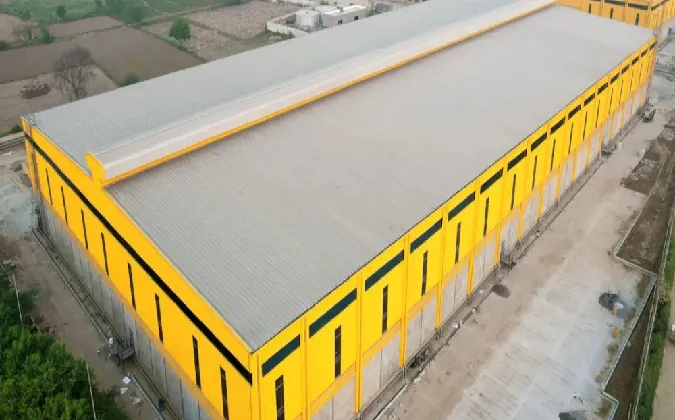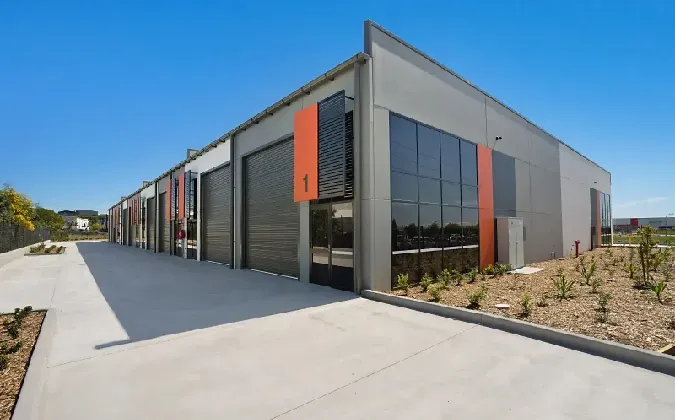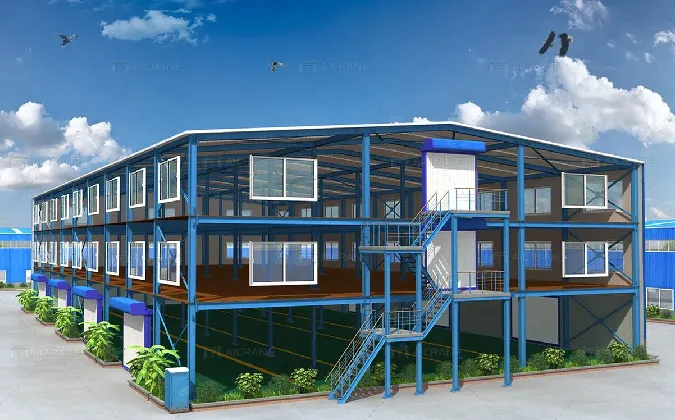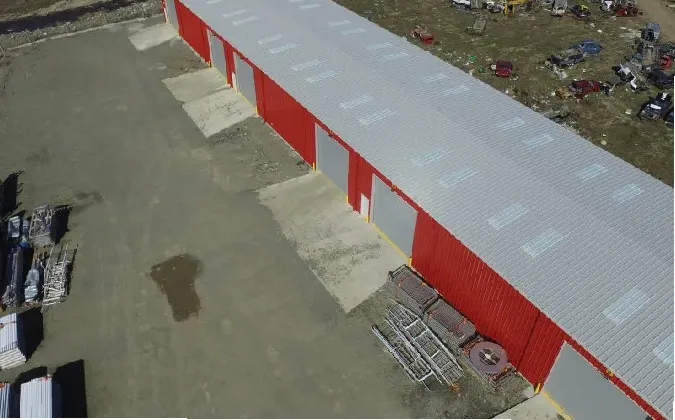- Afrikaans
- Albanian
- Amharic
- Arabic
- Armenian
- Azerbaijani
- Basque
- Belarusian
- Bengali
- Bosnian
- Bulgarian
- Catalan
- Cebuano
- Corsican
- Croatian
- Czech
- Danish
- Dutch
- English
- Esperanto
- Estonian
- Finnish
- French
- Frisian
- Galician
- Georgian
- German
- Greek
- Gujarati
- Haitian Creole
- hausa
- hawaiian
- Hebrew
- Hindi
- Miao
- Hungarian
- Icelandic
- igbo
- Indonesian
- irish
- Italian
- Japanese
- Javanese
- Kannada
- kazakh
- Khmer
- Rwandese
- Korean
- Kurdish
- Kyrgyz
- Lao
- Latin
- Latvian
- Lithuanian
- Luxembourgish
- Macedonian
- Malgashi
- Malay
- Malayalam
- Maltese
- Maori
- Marathi
- Mongolian
- Myanmar
- Nepali
- Norwegian
- Norwegian
- Occitan
- Pashto
- Persian
- Polish
- Portuguese
- Punjabi
- Romanian
- Russian
- Samoan
- Scottish Gaelic
- Serbian
- Sesotho
- Shona
- Sindhi
- Sinhala
- Slovak
- Slovenian
- Somali
- Spanish
- Sundanese
- Swahili
- Swedish
- Tagalog
- Tajik
- Tamil
- Tatar
- Telugu
- Thai
- Turkish
- Turkmen
- Ukrainian
- Urdu
- Uighur
- Uzbek
- Vietnamese
- Welsh
- Bantu
- Yiddish
- Yoruba
- Zulu
aug . 28, 2025 04:20 Back to list
The Foundation of Modern Industrial Infrastructure: Steel Structure Buildings
In the rapidly evolving landscape of industrial and commercial development, the demand for robust, efficient, and sustainable construction solutions is paramount. Among these, the steel structure building stands out as a superior choice, offering unparalleled advantages in terms of strength, design flexibility, and construction speed. These engineered systems are not merely structures; they are strategic assets that enable businesses across diverse sectors to optimize their operations, enhance productivity, and ensure long-term sustainability. From sprawling manufacturing plants to sophisticated logistics hubs, steel structures provide the essential framework for a future-ready industrial footprint.
This comprehensive guide delves into the intricate world of steel structure construction, exploring its critical trends, technical specifications, diverse application scenarios, and the profound advantages it offers. We will also examine the meticulous manufacturing processes, essential vendor selection criteria, and the transformative potential of customized solutions, underscored by real-world case studies and authoritative data.
Industry Trends Shaping Steel Structure Construction
The global steel structure building market is experiencing dynamic shifts, driven by several key trends:
- Sustainability and Green Building Initiatives: There is a growing emphasis on environmentally friendly construction. Steel's high recyclability (over 85% of structural steel is recycled) and its ability to reduce construction waste align perfectly with these goals. This trend is pushing for more efficient design, lower embodied carbon, and integration with renewable energy systems.
- Digitalization and BIM Integration: Building Information Modeling (BIM) is revolutionizing design and construction. It allows for highly accurate virtual prototyping, clash detection, and streamlined project management, significantly reducing errors and improving efficiency in steel structure projects. Digital fabrication techniques, including robotic welding and automated cutting, are also becoming more prevalent.
- Modular and Prefabricated Construction: To expedite project timelines and enhance quality control, modular steel construction is gaining traction. Components are fabricated off-site under controlled conditions, then transported and assembled on-site, minimizing disruption and accelerating delivery. This is particularly beneficial for complex industrial facilities and remote project sites.
- Advanced Material Science: Innovations in steel alloys are leading to lighter, stronger, and more corrosion-resistant materials, extending service life and reducing maintenance costs. High-strength steel (HSS) and weathering steel are examples of materials expanding the possibilities for structural design.
- Resilience and Disaster Preparedness: In regions prone to seismic activity, high winds, or other natural disasters, the inherent strength and ductility of steel make it a preferred material. Designs are increasingly incorporating enhanced seismic bracing and wind-resistant cladding systems to ensure long-term structural integrity.
Technical Specifications and Material Excellence
The performance of a steel structure building is intrinsically linked to the quality and specification of its constituent materials and design. Key components typically include primary structural elements (columns, beams), secondary elements (purlins, girts, bracing), and cladding systems.
Steel Grades and Properties:
Commonly utilized steel grades include Q235B and Q345B in China (equivalent to ASTM A36 and A572 Grade 50, respectively, in the US), offering specified minimum yield strengths critical for structural integrity.
- Q235B (ASTM A36): A general-purpose carbon structural steel with a minimum yield strength of 235 MPa (36 ksi). It offers good weldability and machinability, suitable for less demanding applications.
- Q345B (ASTM A572 Grade 50): A low-alloy, high-strength structural steel with a minimum yield strength of 345 MPa (50 ksi). Its higher strength-to-weight ratio allows for lighter designs and longer spans, making it ideal for large-scale industrial structures and heavy-load applications.
- Corrosion Resistance: For environments with high humidity or chemical exposure, galvanized steel or steel treated with specialized protective coatings (e.g., epoxy, polyurethane) is essential to ensure a service life often exceeding 50 years.
Typical Component Materials:
- Main Steel Structure: H-section steel (welded or hot-rolled) for columns and beams, providing the primary load-bearing framework.
- Secondary Framing: C-section or Z-section purlins and girts, typically galvanized, supporting roof and wall cladding.
- Bracing: Round bars, angle steel, or rod bracing for lateral stability against wind and seismic forces.
- Roof and Wall Cladding: Single-skin corrugated steel sheets, sandwich panels (e.g., EPS, PU, Rock Wool for insulation), or fiberglass sheets for natural light.

Figure 1: Illustration of key structural components in a steel structure building.
The Meticulous Manufacturing Process of Steel Structure Building
The creation of a high-quality steel structure building involves a precision-driven, multi-stage manufacturing process, emphasizing quality control and adherence to international standards.
- Design and Engineering: Utilizing advanced software (e.g., AutoCAD, Tekla Structures, SAP2000), detailed structural drawings are developed, considering local building codes, load requirements (wind, snow, seismic), and client specifications. This stage defines material grades, connection types, and fabrication details.
- Material Procurement: High-grade steel plates, sections, and other raw materials are sourced from certified suppliers, ensuring compliance with standards like ASTM, EN, or JIS. Material test certificates are verified.
- Cutting and Shaping: Steel plates and sections are precisely cut to size and shape using advanced CNC cutting machines (e.g., plasma, laser, or oxy-fuel cutting). This minimizes material waste and ensures accuracy. For specialized components, techniques like cold bending or hot forming might be applied.
- Drilling and Punching: Holes for bolts are precisely drilled or punched using automated machinery, ensuring accurate alignment for assembly.
- Welding: Fabricators assemble individual components into larger sections (e.g., H-beams, box columns) through various welding techniques, including Submerged Arc Welding (SAW) for thick plates, Gas Metal Arc Welding (GMAW) for versatile applications, and Shielded Metal Arc Welding (SMAW) for specific joints. Weld quality is meticulously inspected via Non-Destructive Testing (NDT) methods such as ultrasonic testing, magnetic particle inspection, or visual inspection to comply with AWS D1.1 or ISO 3834.
- Shot Blasting: Fabricated steel components undergo shot blasting to remove rust, scale, and contaminants, creating a clean, roughened surface ideal for optimal paint adhesion. This process adheres to standards like ISO 8501-1 Sa2.5.
- Painting/Galvanization: A multi-layer protective coating system (primer, intermediate, topcoat) is applied to prevent corrosion. Coatings are selected based on the operational environment and desired service life. Alternatively, hot-dip galvanization (per ASTM A123) is employed for superior, long-term corrosion resistance, particularly in harsh industrial or marine environments.
- Quality Control & Pre-assembly: Throughout the entire process, stringent quality control measures are implemented. Dimensions are checked against drawings, weld integrity is verified, and coating thicknesses are measured. For complex structures, a trial pre-assembly of critical sections may be conducted in the factory to ensure perfect fit-up on-site, minimizing erection time and potential errors.
- Labeling and Packaging: Each component is clearly labeled according to erection drawings, then carefully packaged for safe and efficient transportation to the construction site.
Adherence to international standards such as ISO 9001 (Quality Management Systems) and ANSI/AISC 360 (Specification for Structural Steel Buildings) is fundamental to ensuring the structural integrity, safety, and longevity of the final product. The typical service life for a well-maintained steel structure plant can exceed 50 years, often reaching 70-100 years with appropriate maintenance and coating systems.
Diverse Application Scenarios and Target Industries
The versatility of steel structure building makes it an indispensable solution across a multitude of industries and applications, catering to specific operational demands.
Target Industries:
- Petrochemical Industry: Required for process plants, pipe racks, storage tank farms, and equipment shelters, where resistance to corrosive environments and high temperatures is critical. Steel structures often feature specialized coatings or galvanized finishes to ensure long-term integrity.
- Metallurgy: Used for smelters, rolling mills, and foundries, demanding structures capable of withstanding extreme heat, heavy loads from overhead cranes, and corrosive fumes. Large clear spans are often required for equipment layout.
- Water Supply & Drainage: Essential for pump stations, water treatment facilities, and desalination plants, where steel offers rapid construction and corrosion resistance, particularly when exposed to humid or chemically aggressive atmospheres.
- Manufacturing & Industrial Facilities: The archetypal steel structure factory or steel structure plant, including automotive factories, machinery workshops, textile mills, and electronics assembly plants. These often require large clear spans, high bay areas, and integrated crane systems to facilitate production lines.
- Warehousing & Logistics: High-span, column-free structures are ideal for storage facilities, distribution centers, and cold storage warehouses. The rapid erection of steel structures allows businesses to quickly scale their logistics infrastructure. For cold storage, steel frames combined with insulated sandwich panels provide excellent thermal performance, leading to significant energy savings.
- Commercial & Retail: Shopping malls, exhibition centers, and office complexes benefit from steel's aesthetic versatility and ability to create open, flexible spaces.
- Agriculture: Barns, livestock shelters, and agricultural storage buildings leverage steel's durability, pest resistance, and low maintenance.

Figure 2: A large-span steel structure building serving as a modern industrial facility.
In scenarios demanding rapid deployment, such as disaster relief structures or temporary facilities, modular steel construction offers unmatched speed and reusability. Its inherent strength and adaptability also make it a preferred choice for expansions and modifications to existing industrial complexes, minimizing operational downtime.
Technical Advantages of Steel Structure Building
The selection of steel for structural construction is driven by a compelling set of technical and economic advantages:
- Superior Strength-to-Weight Ratio: Steel possesses an exceptionally high strength-to-weight ratio compared to concrete, allowing for lighter foundations, larger clear spans, and more slender structural elements, optimizing space utilization.
- Rapid Construction and Reduced On-site Labor: Prefabrication off-site significantly accelerates construction timelines. Components arrive on-site ready for erection, leading to quicker project completion and reduced labor costs.
- Design Flexibility and Adaptability: Steel can be shaped into virtually any form, offering architects and engineers immense creative freedom. Structures can be easily expanded, modified, or even relocated, providing long-term flexibility for evolving business needs.
- Seismic Resistance: Steel's ductility and inherent flexibility allow it to absorb and dissipate seismic energy, making steel structure building highly resilient in earthquake-prone regions, minimizing damage and ensuring occupant safety.
- Durability and Longevity: With proper design and corrosion protection, steel structures offer exceptional durability and a long service life, often exceeding 50-70 years, requiring minimal maintenance.
- Sustainability: Steel is 100% recyclable without loss of properties, making it an environmentally responsible choice. The reduced waste generation during construction further enhances its green credentials.
- Cost-Effectiveness: While initial material costs might vary, the overall project cost-effectiveness of steel structures stems from faster construction, reduced foundation requirements, and lower long-term maintenance.
Comparison: Steel vs. Reinforced Concrete
| Feature | Steel Structure | Reinforced Concrete |
|---|---|---|
| Construction Speed | Very fast (prefabricated components) | Slower (curing time, formwork) |
| Strength-to-Weight Ratio | High (lighter foundations) | Lower (heavier, requires more robust foundations) |
| Design Flexibility | Excellent (large spans, easy modifications) | Moderate (more restrictive for large spans) |
| Seismic Performance | Excellent (ductile, energy absorption) | Good (with proper design, but less ductile) |
| Sustainability | Highly recyclable, less waste | Lower recyclability, more construction waste |
| Corrosion Resistance | Requires protective coatings/galvanization | Good, but rebar can corrode if exposed |
| Fire Resistance | Requires fireproofing for compliance | Inherently good (non-combustible) |
Product Specification: Industrial Steel Shed Building
To illustrate typical parameters for a specialized steel structure building like the "Steel Shed Building" from our product range, consider the following specifications, which can be highly customized based on project requirements.
| Parameter | Typical Specification Range | Notes/Customization |
|---|---|---|
| Structure Type | Light Steel Frame / Heavy Steel Frame | Optimized for load requirements (e.g., crane loads, multi-story) |
| Main Steel Material | Q345B (ASTM A572 Gr.50) or Q235B (ASTM A36) | Selected based on design loads and cost-efficiency |
| Secondary Steel Material | Q235B galvanized C/Z Purlins/Girts | Minimum GZ275 (Z275g/m² zinc coating) |
| Clear Span Width | 15m - 60m+ (50ft - 200ft+) | Column-free design for maximum internal space |
| Eave Height | 6m - 20m+ (20ft - 65ft+) | Accommodates overhead cranes, mezzanines, high-bay storage |
| Bay Spacing | 6m - 9m (20ft - 30ft) | Optimized for structural efficiency and internal layout |
| Roof Cladding | 0.5mm - 0.8mm single color steel sheet; or Sandwich Panel (EPS, PU, Rock Wool) | Insulation R-values, fire rating, natural light requirements (FRP sheets) |
| Wall Cladding | 0.5mm - 0.7mm single color steel sheet; or Sandwich Panel (EPS, PU, Rock Wool) | Energy efficiency, aesthetic finish, sound insulation |
| Wind Load Resistance | Up to 0.8-1.5 KN/m² (100-180 km/h) | Calculated based on local building codes and site conditions |
| Snow Load Resistance | Up to 0.5-2.0 KN/m² (10-40 psf) | Calculated based on local building codes and site conditions |
| Seismic Resistance | Grade 8-9 (Richter Scale) | Conforms to local seismic design provisions (e.g., IBC, Eurocode 8) |
| Surface Treatment | Shot blasting Sa2.5 + Primer (Zinc Rich Epoxy) + Topcoat | Hot-dip galvanization for highly corrosive environments |
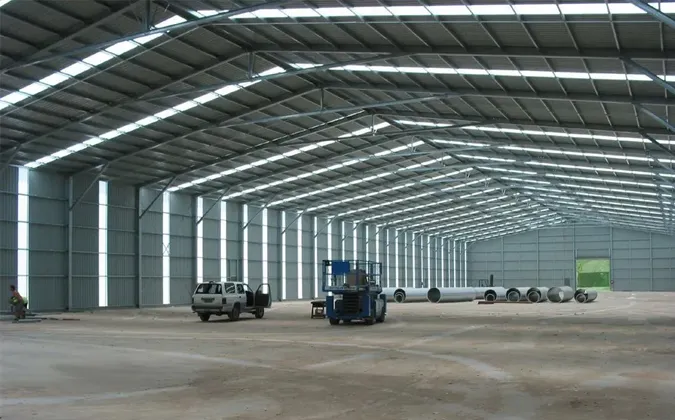
Figure 3: Advanced fabrication techniques ensuring precision in steel structure building components.
Vendor Comparison and Selection Criteria
Selecting the right vendor for a steel structure building project is a critical decision that impacts project success, longevity, and cost-effectiveness. A comprehensive evaluation should go beyond initial price quotes.
Key Evaluation Criteria:
- Expertise and Experience: Look for vendors with a proven track record in projects similar in scale and complexity. Evaluate their engineering team's capabilities and their understanding of local building codes and international standards. A vendor with extensive experience in steel structure factory projects can anticipate challenges and provide optimized solutions.
- Certifications and Quality Assurance: Verify adherence to international quality standards (e.g., ISO 9001, CE, AWS, AISC). This ensures that materials, fabrication, and quality control processes meet rigorous benchmarks.
- Design and Customization Capabilities: A reputable vendor should offer robust in-house design services, capable of providing customized solutions, value engineering, and detailed shop drawings. Their ability to integrate client-specific operational needs into the structural design is paramount.
- Fabrication Technology and Capacity: Assess their manufacturing facilities. Advanced CNC machinery, automated welding, and efficient material handling systems indicate higher precision, faster production, and superior quality. Understand their production capacity to ensure project timelines can be met.
- Project Management and Communication: Evaluate their project management methodology, including communication protocols, scheduling, and risk management strategies. Clear and proactive communication is vital for complex projects.
- After-Sales Support and Warranty: Inquire about warranty periods for materials and workmanship, as well as post-completion support for maintenance or future modifications.
Vendor Service Comparison Example:
| Service Aspect | Leading Provider (e.g., Hongjishunda) | Standard Provider |
|---|---|---|
| Design Engineering | In-house team, BIM-integrated, value engineering | Outsourced, basic design based on templates |
| Certifications | ISO 9001, CE, AWS certified welders, independent material testing | Basic local certifications, minimal independent verification |
| Fabrication Accuracy | Automated CNC, robotic welding, pre-assembly checks | Manual/semi-automated processes, higher tolerance variation |
| Corrosion Protection | Multi-layer paint systems, hot-dip galvanization options, specified surface prep | Basic primer/single coat paint, limited galvanization options |
| Project Support | Dedicated project manager, site supervision, installation guidance | Basic drawings, limited on-site support |
| Warranty & After-sales | Comprehensive warranty, long-term technical support, spare parts availability | Limited warranty, minimal post-completion support |
Customized Solutions for Unique Industrial Needs
The true power of steel structure building lies in its adaptability. Generic, off-the-shelf solutions often fail to address the specific operational nuances and environmental challenges of modern industrial facilities. Customization is not just an option but a necessity for optimal performance and long-term value.
Leading manufacturers provide bespoke engineering services to tailor every aspect of a steel structure, including:
- Load-Bearing Capacity: Designed to accommodate specific heavy equipment, overhead cranes (e.g., 5-ton, 50-ton, 100-ton bridge cranes), mezzanines, and multi-story floor loads.
- Environmental Controls: Integration of specialized insulation (e.g., PU sandwich panels for cold storage), ventilation systems, and natural lighting (skylights, translucent wall panels) to create optimal internal climates, reducing energy consumption.
- Architectural Aesthetics: While primarily functional, industrial structures can also incorporate aesthetic elements through facade treatments, color schemes, and unique roof profiles, blending into urban or natural landscapes.
- Expansion and Modularity: Designing structures with future expansion in mind, enabling seamless additions without significant disruption to ongoing operations. Modular components further support this flexibility.
- Fire Safety and Regulations: Implementation of specific fireproofing measures (fire-resistant coatings, intumescent paints) and egress strategies to comply with stringent fire safety codes in different industries.
- Specialized Access: Incorporation of custom access solutions such as catwalks, ladders, maintenance platforms, and personnel/vehicular doors tailored to operational workflows.

Figure 4: Tailored steel structure building design for complex industrial requirements.
A deep understanding of the client's business processes, equipment layout, and future growth projections is crucial for delivering a truly optimized and high-performing facility.
Application Case Studies and Success Stories
Real-world applications demonstrate the tangible benefits of sophisticated steel structure building solutions:
Case Study 1: Large-Span Logistics Warehouse
- Client: Global E-commerce Logistics Provider
- Challenge: Need for a 50,000 m² warehouse with a clear span of 80 meters to accommodate automated sorting equipment and high-bay racking, requiring rapid construction to meet market demand.
- Solution: Engineered a custom-designed steel structure plant utilizing high-strength Q345B steel for primary frames and an advanced insulated sandwich panel system for thermal efficiency. The structure was prefabricated and erected in 6 months, significantly faster than traditional methods.
- Outcome: Achieved a highly efficient, column-free internal space maximizing storage density. The rapid construction allowed the client to commence operations ahead of schedule, capturing significant market share. Energy consumption for climate control was reduced by 25% due to superior insulation.
Case Study 2: Petrochemical Equipment Shelter
- Client: Major Chemical Processing Company
- Challenge: Construction of an equipment shelter in a highly corrosive coastal environment, requiring exceptional durability and strict adherence to safety standards for hazardous materials.
- Solution: Designed a hot-dip galvanized steel structure, incorporating fire-resistant cladding and intrinsically safe electrical conduits. All structural connections were bolted for ease of maintenance and future modifications.
- Outcome: The project delivered a highly durable, corrosion-resistant facility expected to last over 60 years with minimal maintenance, despite the aggressive environment. Compliance with API and relevant safety standards was fully met, enhancing operational safety and reliability.
Ensuring Trust and Reliability: FAQs, Lead Times, Warranty, and Support
Frequently Asked Questions (FAQs)
Q1: What is the typical lead time for a steel structure building project?
A: Lead times vary based on project complexity and scale. Typically, design and fabrication can take anywhere from 4 to 12 weeks for standard industrial buildings, followed by 2-6 weeks for shipping. Large or highly customized projects may require longer. We provide a detailed project schedule at the outset.
Q2: What kind of warranty is provided for steel structures?
A: We typically offer a standard structural warranty of 10-25 years on main steel components, covering defects in materials and workmanship. Specific coatings and cladding systems may have separate manufacturer warranties. Detailed warranty information is provided with each quotation.
Q3: Can your steel structures withstand extreme weather conditions?
A: Absolutely. Our steel structures are engineered to meet or exceed local building codes for wind, snow, and seismic loads, ensuring resilience against extreme weather. We perform precise structural analysis for each project based on its geographical location.
Q4: Do you offer installation services or supervision?
A: While many clients opt for local contractors, we offer detailed erection manuals, technical support, and on-site supervision services to ensure smooth and efficient installation. Our experienced engineers can guide your local team through the entire assembly process.
Lead Time and Fulfillment
Our streamlined process, from design consultation to fabrication and logistics, is optimized for efficiency. Following finalized designs and material approvals, fabrication typically commences within 2-4 weeks. Standard component production for a typical 2,000 m² industrial steel structure plant can be completed in 6-8 weeks, followed by shipping. Expedited options are available for urgent projects, subject to resource availability.
Warranty Commitments
We stand by the quality of our steel structure building products. All structural steel components are covered by a comprehensive warranty against manufacturing defects, typically ranging from 10 to 25 years. This commitment underscores our confidence in our materials, fabrication processes, and engineering rigor. Extended warranty options and maintenance contracts are also available for enhanced peace of mind.
Dedicated Customer Support
Our commitment extends beyond project delivery. We provide extensive after-sales support, including technical assistance for maintenance, troubleshooting, and future modifications. Our dedicated support team is accessible via phone, email, and online portals to address any inquiries promptly, ensuring the long-term performance and value of your investment.
Conclusion
The evolution of the steel structure building industry reflects a pursuit of efficiency, durability, and sustainability. As a cornerstone of modern industrial and commercial development, steel structures offer unmatched advantages in terms of design flexibility, rapid construction, and long-term performance. By partnering with a reputable and experienced provider, businesses can leverage these benefits to create infrastructure that not only meets current operational demands but is also adaptable to future challenges and growth. The investment in a high-quality steel structure is an investment in resilient, efficient, and sustainable operations for decades to come.
References
- American Institute of Steel Construction (AISC) – Specification for Structural Steel Buildings. Available at: https://www.aisc.org
- International Organization for Standardization (ISO) – ISO 9001: Quality Management Systems. Available at: https://www.iso.org
- American Welding Society (AWS) – AWS D1.1/D1.1M: Structural Welding Code – Steel. Available at: https://www.aws.org
- World Steel Association – Sustainable Steel. Available at: https://www.worldsteel.org
- ASTM International – Various standards for steel products and testing. Available at: https://www.astm.org
-
Steel Frame Factory with Insulated Roof Panels
NewsAug.14,2025
-
Prefab Metal Building with Insulation Package Options
NewsAug.14,2025
-
Industrial Steel Sheds for Temporary Workshop Use
NewsAug.14,2025
-
Metal Workshops Featuring Corrugated Steel Roofs
NewsAug.14,2025
-
Modular Steel Frame Excellence: Our Pursuit of Perfection
NewsAug.14,2025
-
Metal Garage Kits Crafted with Customer Satisfaction at Heart
NewsAug.14,2025
Products categories
Our Latest News
We have a professional design team and an excellent production and construction team.






